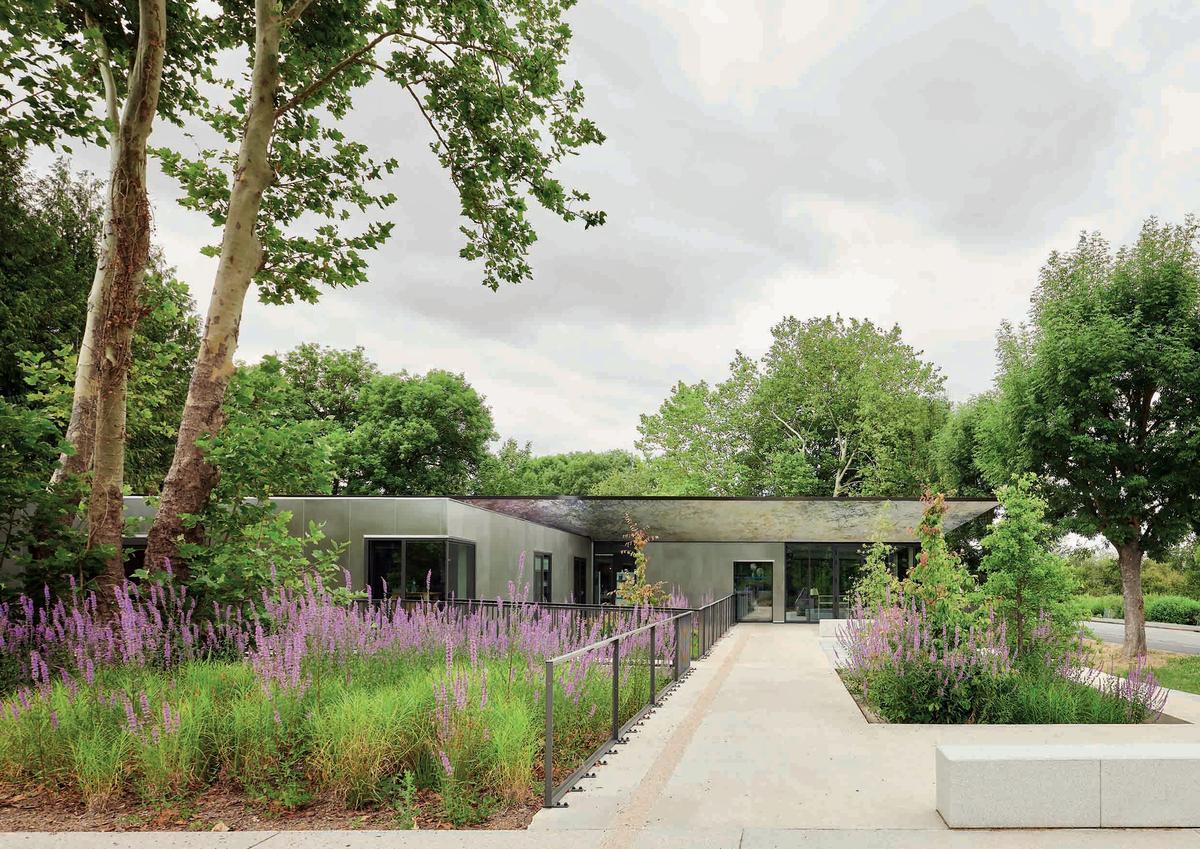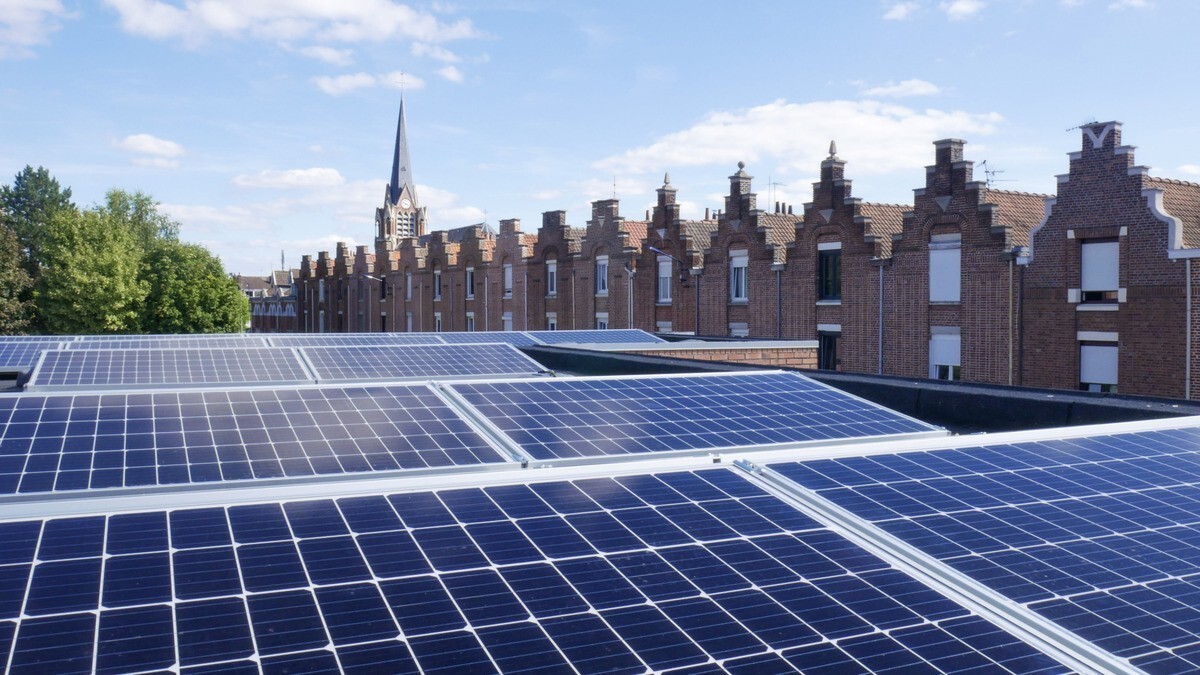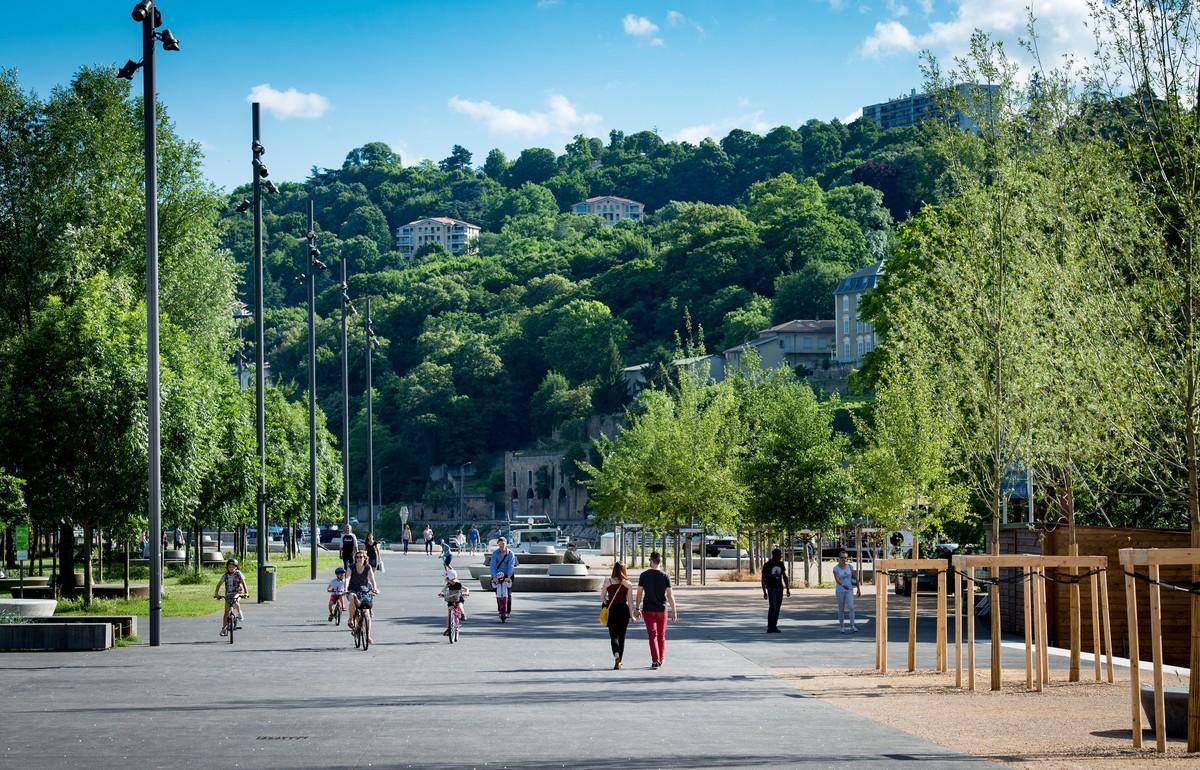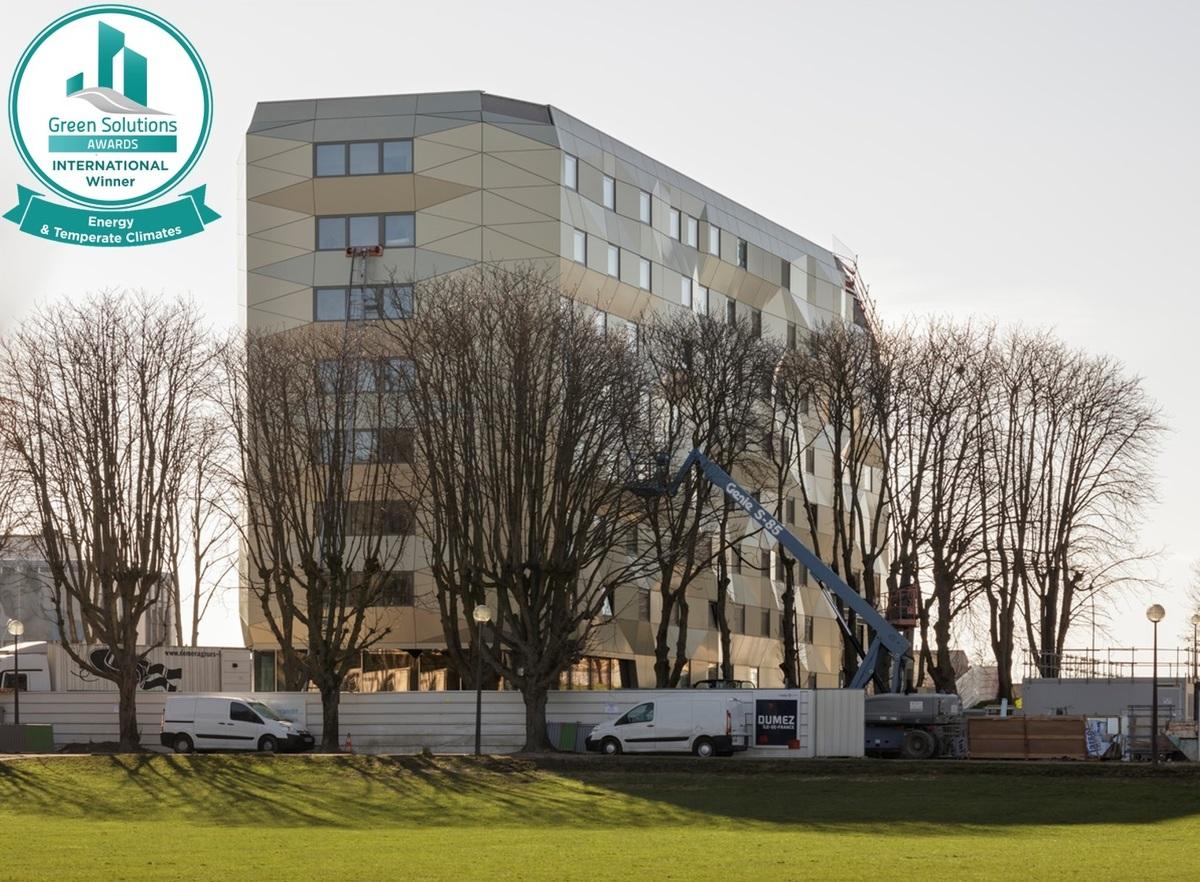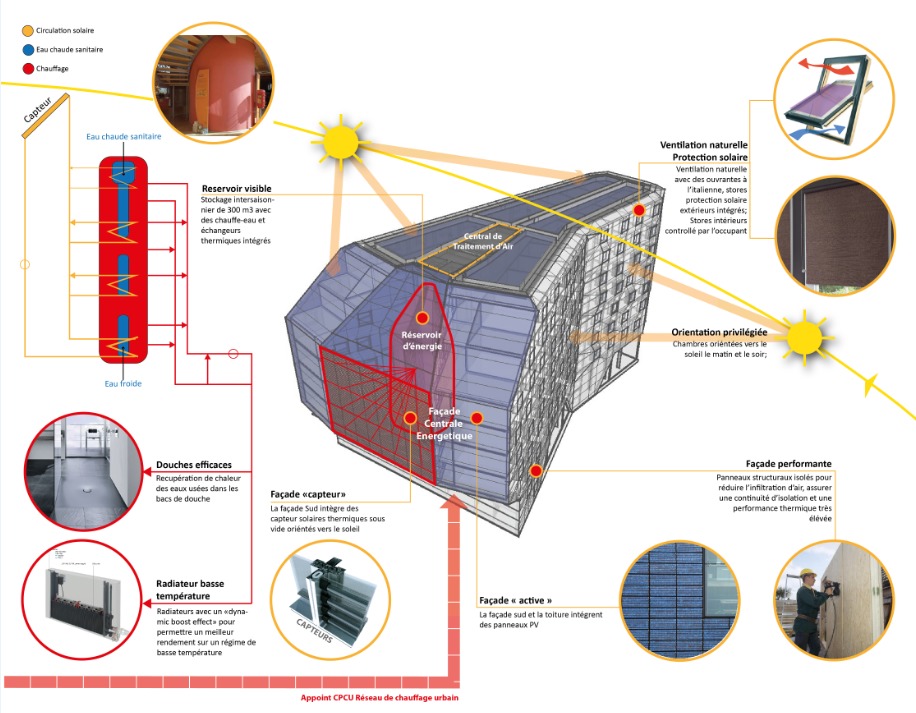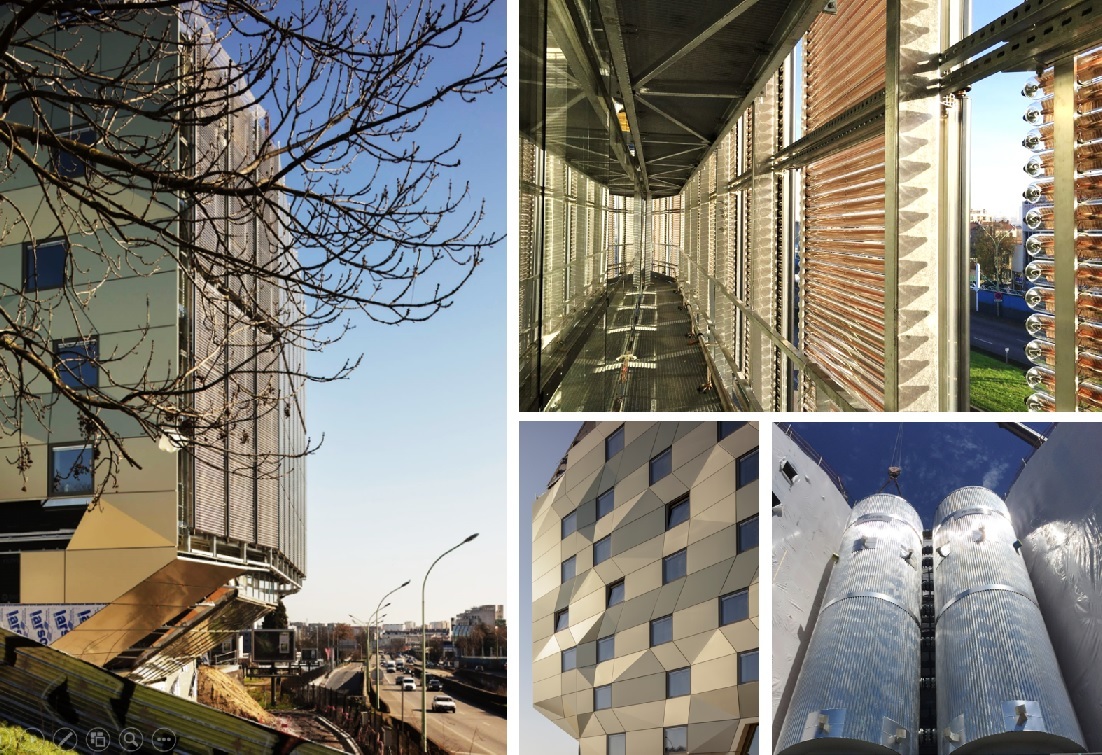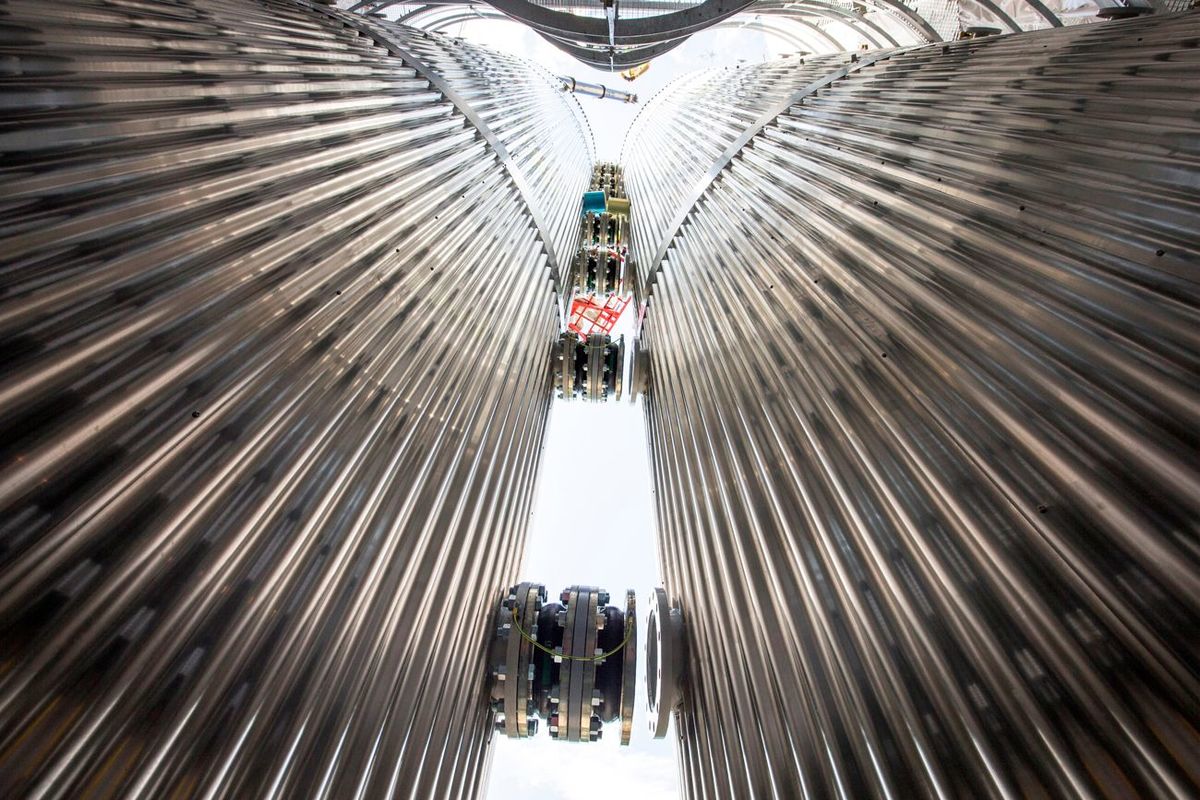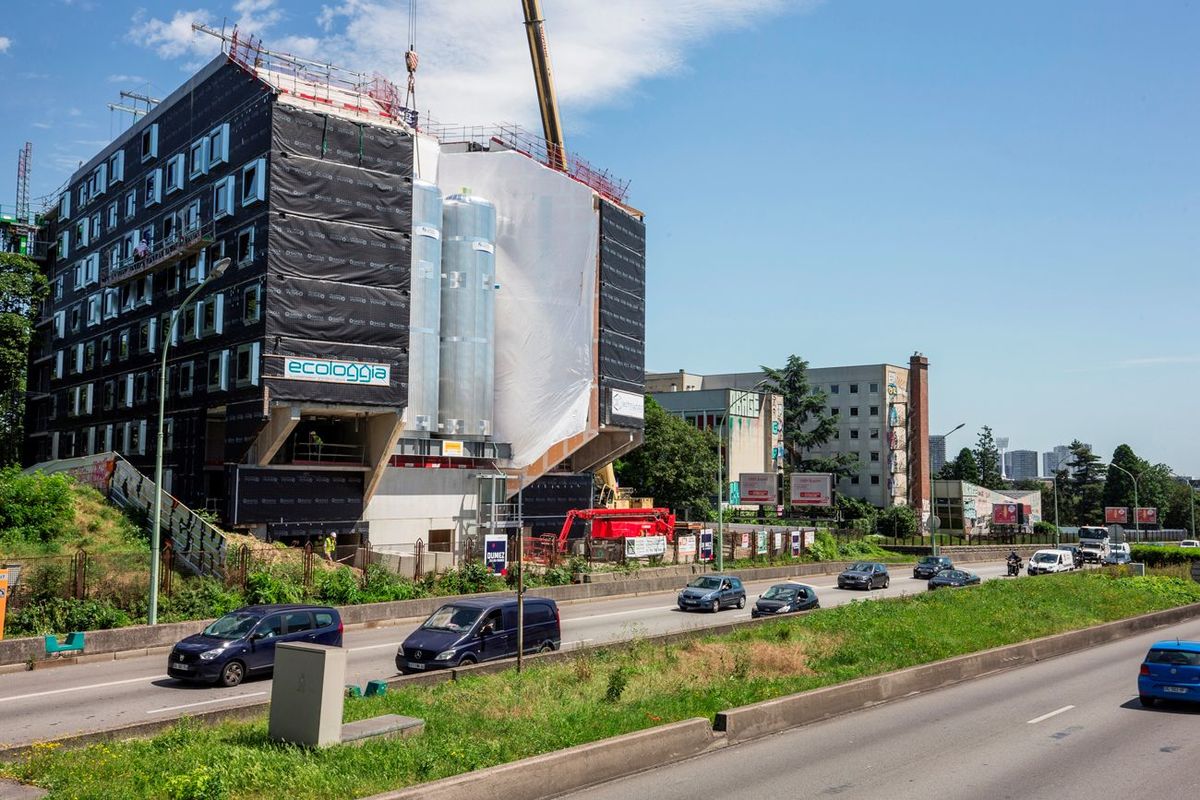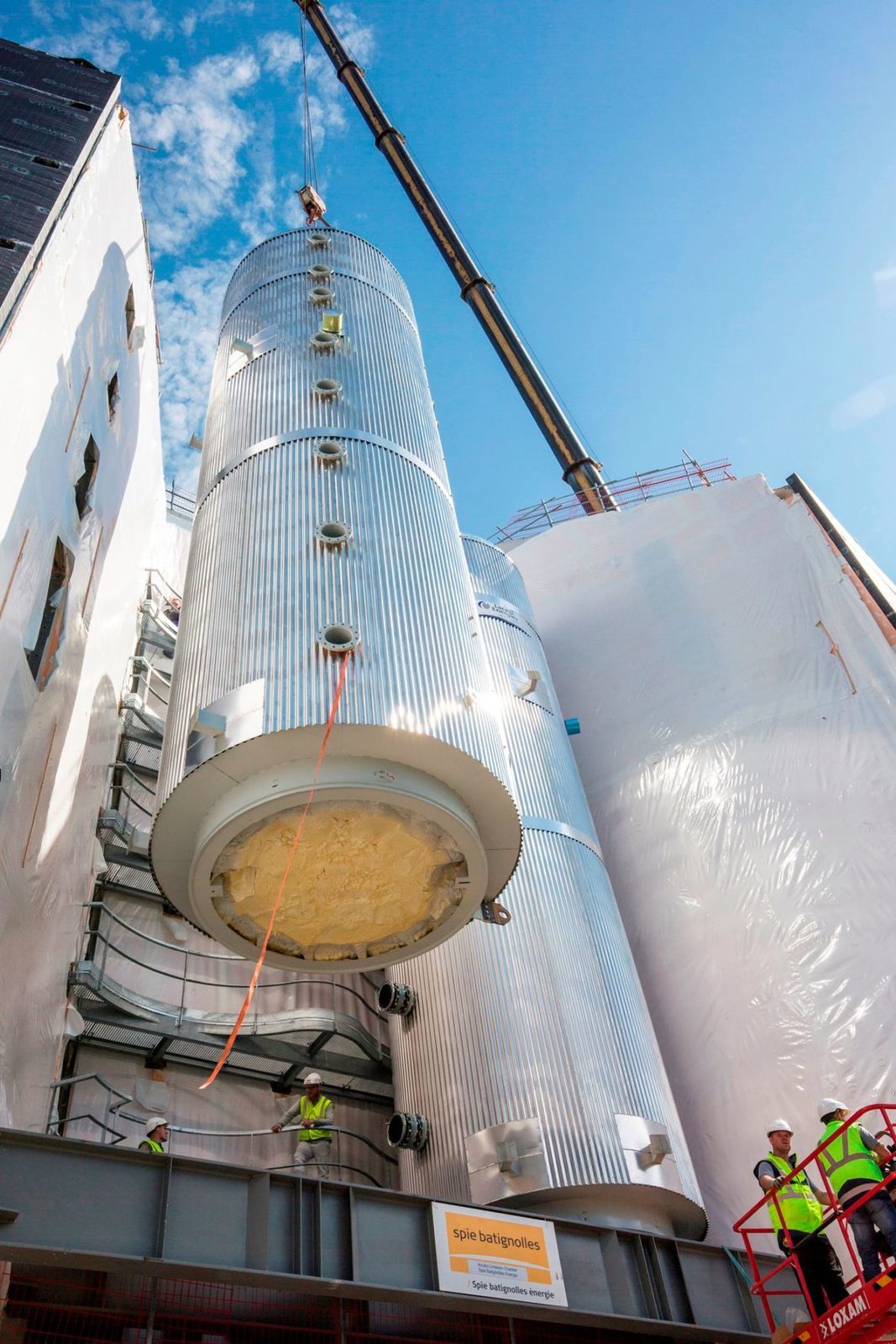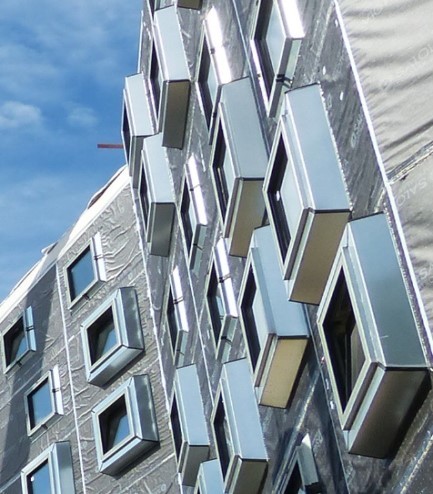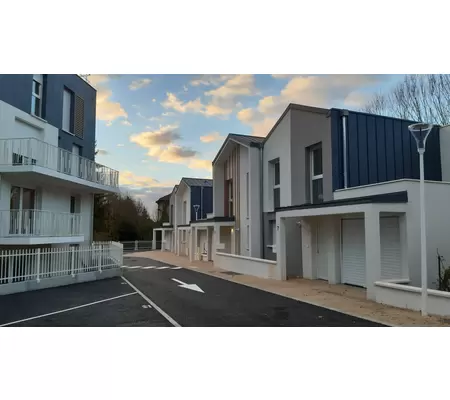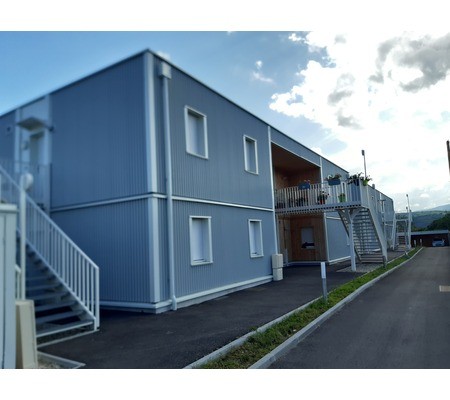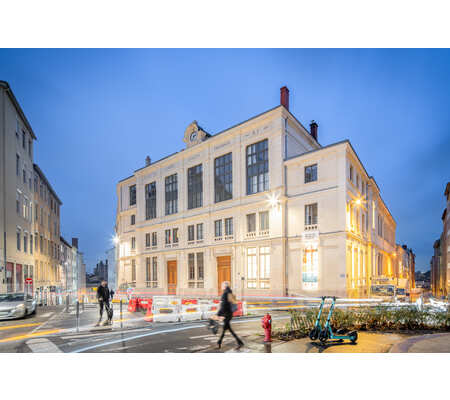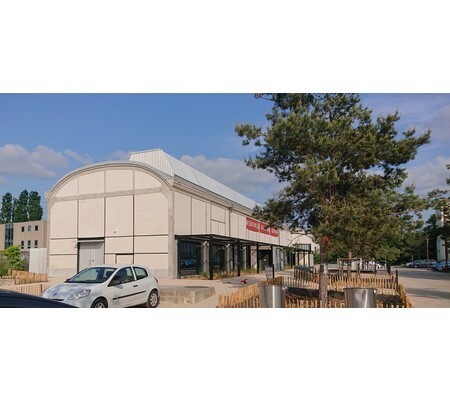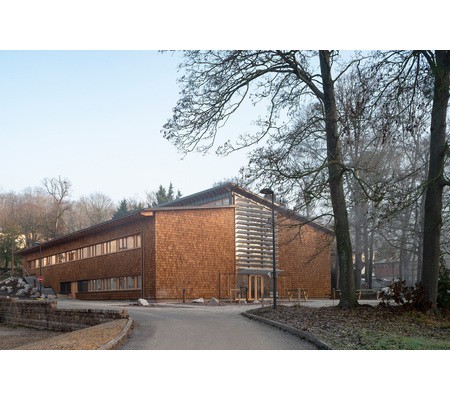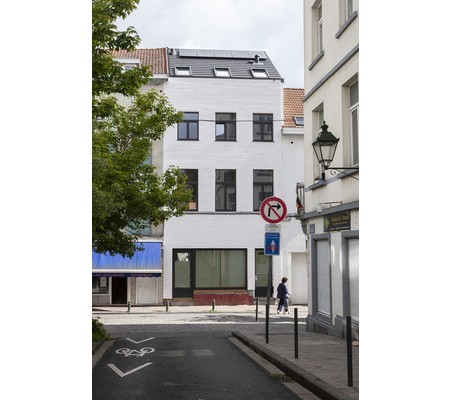House of Ile de France
Last modified by the author on 30/01/2019 - 09:58
New Construction
- Building Type : Student residence
- Construction Year : 2014
- Delivery year : 2017
- Address 1 - street : 17 Boulevard Jourdan 75014 PARIS, France
- Climate zone : [Cfb] Marine Mild Winter, warm summer, no dry season.
- Net Floor Area : 5 205 m2
- Construction/refurbishment cost : 13 394 341 €
- Number of Dwelling : 142 Dwelling
- Cost/m2 : 2573.36 €/m2
-
Primary energy need
-5.9 kWhep/m2.an
(Calculation method : RT 2005 )
Located in the Cité universitaire de Paris, the Maison de l'Ile de France is the first eco-campus in the capital. The project is exemplary and implements a high energy performance strategy to meet ZEN objectives (Zero Energy, Zero Carbon, Zero Nuclear Waste) and thus anticipate the thermal regulations of 2020.
With its 142 rooms and triangular shape, the residence opens to form a wide wall that captures solar energy. The facade overlooking the peripheral boulevard is made up of 563 m² of photovoltaic sensors and 260 m² vacuum thermal panels combined with an inter-seasonal storage system of 156 m3. This device constitutes the signature of the house.
The storage tank will ensure 80% of the thermal requirements, so in winter, heating and domestic hot water can use the surplus energy stored in summer.
This lets you guess the innovative energy feature of this house that produces more energy than it consumes.
Sustainable development approach of the project owner
The Ile-de-France Region finances the operation and is the project owner, with the SAERP as its agent. Upon completion of the construction, it handed over the building to the State and the Cité Internationale Universitaire de Paris, which became its manager. The ambition of achieving the Positive Energy level was desired from the outset for this project, which already anticipated strongly on the evolution of thermal regulation. Achieving this objective beyond regulatory uses was envisaged at the beginning of the programming studies, as well as the choice not to aim at certification and labeling, but rather to build customized environmental objectives, depending on the use and of the site. The Region's expectations for this project are twofold: - On the one hand, this building could be emblematic of the environmental policy carried out by the Region. The aim of the project is to be a demonstration of the Region's environmental policy and to become a place of exchange on this subject - On the other hand, it is also one of the illustrations of its policy in terms of hosting foreign students in the Île-de-France region. Beyond the energy objectives, it is a global project, which has expanded to other issues. To only cite a few : - Limiting gray energy: as an example, storage tanks and solar panels are manufactured in the south-west. - Ensure good indoor air quality in view of the proximity of the peripheral, by providing sufficient air filtration devices and ventilation rates, and by limiting the use of polluting materials (paints, Floor, furniture ...) - Protecting residents from acoustic nuisance related to this proximity - Promote the use of renewable materials, the project thus uses a high proportion of wood (solid wood flooring or rubber floors, wooden framing of light facades ...) - Limiting water consumption, using hydro-efficient appliances and re-use of rainwater for watering - Implement a site with very low nuisance, considering the sensitivity of the site (park very frequented, close to the Houses of Lebanon and Cambodia) - Promoting integration jobs: this project made it possible to carry out more than 7,000 hours of insertion on the site Measures have been put in place to help residents understand the operation of the building and make them aware of the environmental issue. - Like all the residences of the Cité Internationale Universitaire in Paris, the Maison de l'Ile-de-France has a director. In order to play a real role of animation and sensitization of the residents, the choice Was an environmental specialist. - Regular awareness-raising actions will be undertaken by residents on the sustainable development and the specificity of the building; The RDC conference room is intended to host events of this type. - A building logbook will be produced to the residents to explain the operation of the building and the proper use of the equipment - At the completion of the work, a satisfaction survey on the comfort of residents and staff will be carried out and analyzed by our AMO High Environmental Quality (first and second year). Energy consumption will also be analyzed for three years. The pioneering character of the construction project of the Maison de l'Ile de France in the environmental field, but also its very particular situation on the immediate outskirts of the peripheral boulevard and the Cité Internationale Universitaire park led the Île de France region to To appeal to IRCAM, the Ecole des Beaux-Arts in Le Mans and the Ecole Nationale Supérieure de Création to work on the sound identity of the building. The questions raised included: -how will the sound performance of the building materialize? -how to make the complex functioning of energy systems more readable? - how to encourage a greater sobriety of consumption (energy, water ...)? The collective MENURE, from the Master Design Sonore created by these three schools, has designed a device in close connection with the building. The installation comprises a perforated structure suspended from the ceiling of the reception hall and composed of more than 200 sensors connected to the GTB. The sound produced varies according to the consumption of the residents.Architectural description
Usually, the architect gives the engineer an already designed building and asks him to "make it work". Here, the ANMA agency (Nicolas Michelin) asked DEERNS about "How to achieve the BEPOS objective and how should the building be designed? ". After an energy analysis of the site, DEERNS opted for a 100% solar strategy, which was based on solar thermal inter-seasonal heat storage tanks, to meet the heating and domestic hot water needs of the building. On the basis of this assumption, ANMA has placed these tanks at the heart of the architectural design for the success of the energy strategy.See more details about this project
https://www.deerns.fr/projets/real-estate/batiments-publics/maison-de-lile-de-france-parishttp://www.hqegbc.org/wp-content/uploads/2017
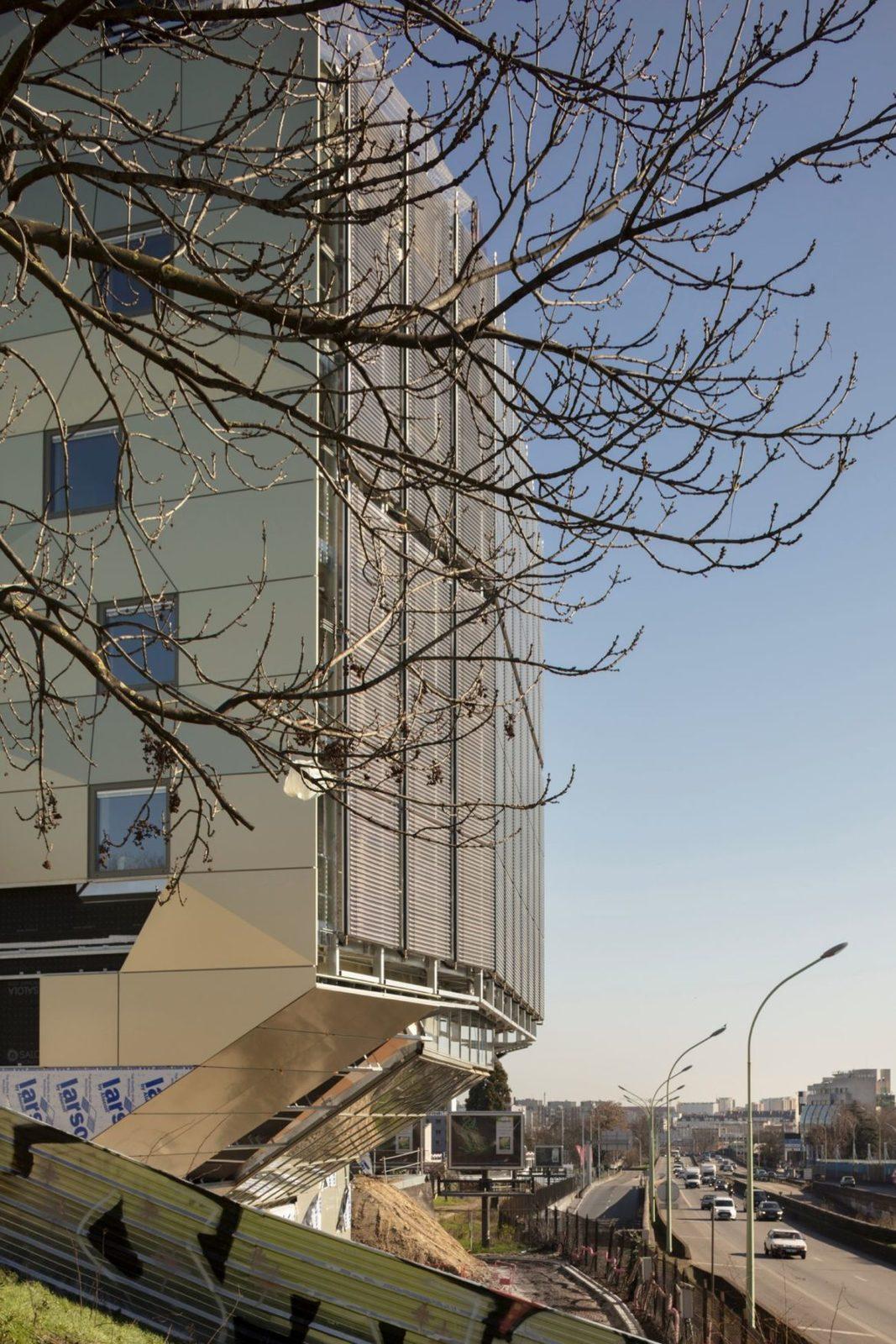
Contractor
Construction Manager
Stakeholders
Designer
Agence Nicolas Michelin et associés
http://www.anma.fr/Structures calculist
BATISERF
http://batiserf.com/Design office Fluids and Environmental Energetics Strategy
Thermal consultancy agency
DEERNS France
Ana Cunha Cribellier : [email protected]
http://www.deerns.frInstaller
Structures calculist
Environmental consultancy
Type of market
Design and implementation
Energy consumption
- -5,90 kWhep/m2.an
- 115,10 kWhep/m2.an
Real final energy consumption
-1,30 kWhef/m2.an
Envelope performance
- 0,34 W.m-2.K-1
- 0,38
- 0,60
More information
The building being delivered at the end of May 2016, we have not yet been able to obtain information on the actual consumption. Nevertheless, detailed dynamic energy simulations have been carried out in order to better estimate the real behavior of the building and its users. The energy strategy is based mainly on the inter-seasonal storage of water tanks (approximately 170,000 liters), the energy regime should take 1 year before functioning as planned during the design. Dynamic energy simulations have been carried out to the detriment of simple regulatory calculations, so as to estimate the consumption and performance of the building in real way. Preliminary studies have been carried out in collaboration with the CIUP to better identify the residence and occupancy scenarios of the residence, according to the behaviors and consumption observed on other residences of the CIUP.
Systems
- Urban network
- Water radiator
- Low temperature floor heating
- Others
- Solar thermal
- Urban network
- Solar Thermal
- Other hot water system
- No cooling system
- Natural ventilation
- Double flow heat exchanger
- Solar photovoltaic
- Solar Thermal
- Energy recovery from waste
- Other, specify
- 100,00 %
Smart Building
Urban environment
- 5 205,00 m2
Product
2 Storage tanks (70,000 liters each)
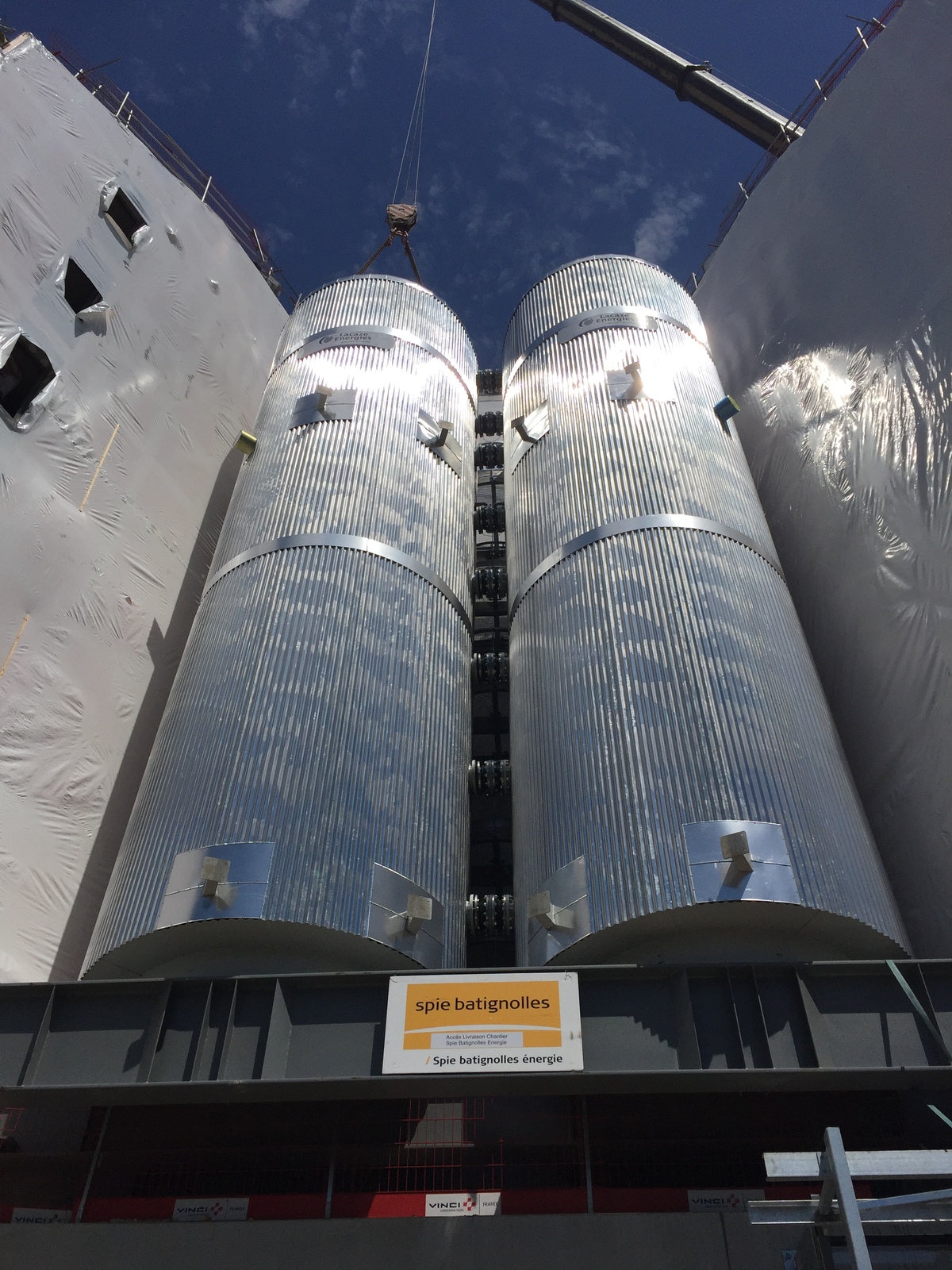
Lacaze Energies
Site internet
http://www.lacaze-energies.fr/Génie climatique, électricité / Chauffage, eau chaude
After an energy analysis of the site, DEERNS opted for a 100% solar strategy, which was based on solar thermal inter-seasonal heat storage tanks, to meet the heating and domestic hot water needs of the building.
DEERNS has designed a tank of 160 m3 of water, placed in the heart of the building and heated thanks to thermal solar collectors. The tank allows the building to be supplied with hot water both for heating (low temperature radiators) and for domestic hot water (DHW). The complement to this device is made by a supplement on district heating network (CPCU).
The over-insulated tanks will restore heat as needed. The stratification of heat in these tanks is one of the key elements of the building's energy performance. This explains the vertical position of the tanks. Indeed, this approach will maximize the efficiency of solar thermal panels and take the heat at the level of the appropriate stratum, according to the needs and the desired temperature.
The installation of tanks on this scale (for a building of 5000m² and a volume of 160m3) represents a real technological innovation in France and even in Europe.
Vacuum thermal solar panels
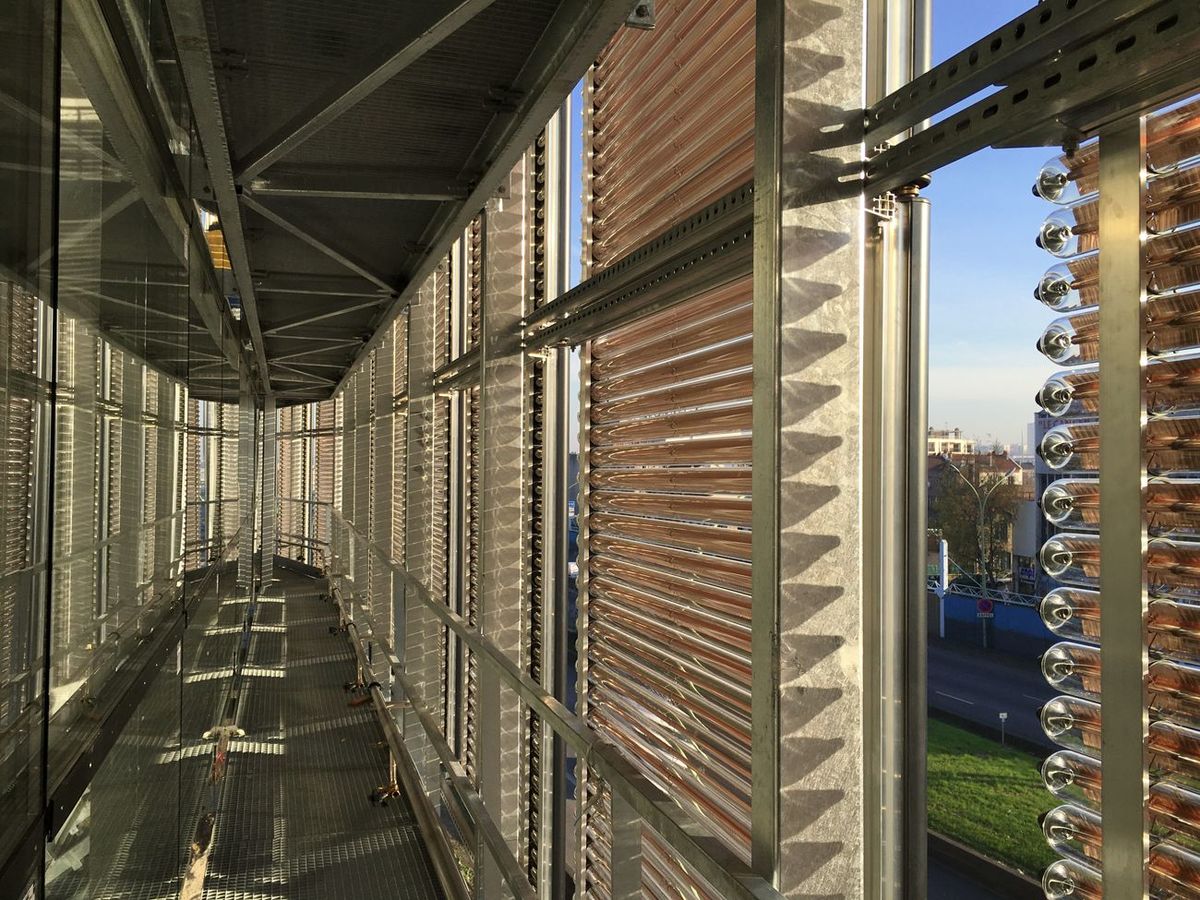
Lacaze Energies
site web
http://www.lacaze-energies.frGénie climatique, électricité / Chauffage, eau chaude
The house will benefit from a genuine solar power plant (260 m² of solar panels under vacuum) which will ensure 100% of its thermal needs. Solar tubes heat a total volume of 160 m3 of water distributed in two prefabricated tanks of 15m high. This inter-seasonal energy storage supplies domestic hot water and heating circuits.
Photovoltaic panels

SUNPOWER
https://www.sunpower.fr/
The electricity production of the building is provided by the photovoltaic plant of 114 kW (700 m² of photovoltaic panels) located on the roof and on the inclined plane of the south facade. Given the limited roof area, the best technology was chosen with panels with a yield greater than 20%.
Breathable glass with integrated blind
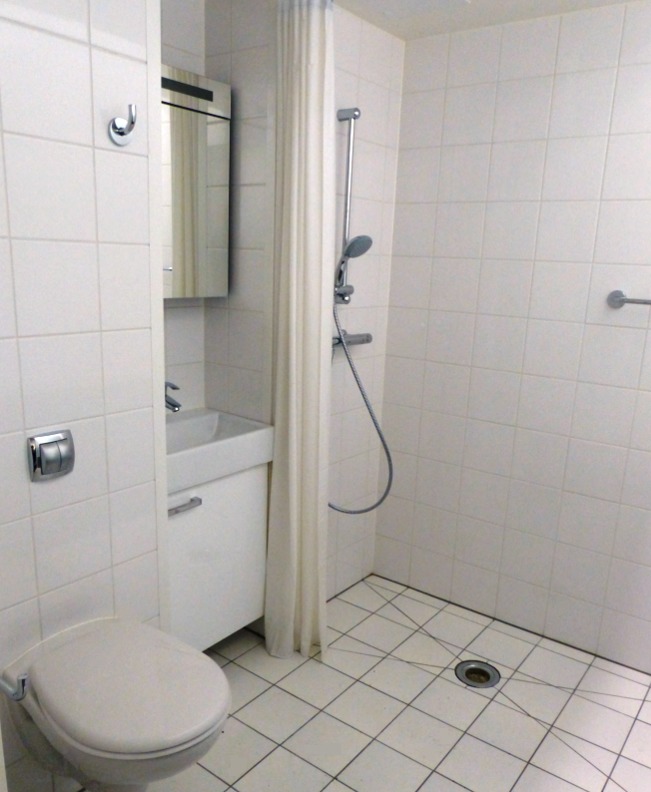
Génie climatique, électricité / Ventilation, rafraîchissement
The breathable glass (double glazing + single glazing), with an integrated blind will ensure the thermal and acoustic comfort of the occupants. Indeed, this glazing is designed to prevent any arrival of condensation on the windows. The filters prevent the intrusion of foreign bodies and promote the hygiene of the installations and thus the rooms of the residence do not require any maintenance. Furthermore, the implementation of a badge reader system allows the temperature, lighting, ventilation and blinds of the rooms to be managed at all times in order to promote the comfort and health of the occupants while controlling the consumption of resources. This management system, identifying busy / unoccupied modes (similar to hotels), will guarantee a significant energy saving.
Greywater heat recovery

GAÏA GREEN
http://gaiagreen.net/recoh-vert/
In the Maison Île de France, the biggest item of energy consumption is that of domestic hot water. It was therefore necessary to select showers at low flow, but also to look at the possibility of valorising the heat of gray water. A system for recovering heat from showers has thus been implemented. Since the water flow is limited to 6L / min, the recuperator makes it possible to recover 40% of the heat resulting from the gray water, thus reducing the residence's energy consumption.
Indeed, the hot waste water from the shower goes down inside the wall of the heat exchanger, preheating the evacuation tube. The clean water rises spirally around this evacuation tube. Hot water transfers calories to cold water. Once preheated, the water will be returned to the shower on the one hand and to the DHW cylinder on the other, replacing the cold water.
In addition, the shower rooms are factory prefabricated. This approach has the advantage of limiting worksite defects, simplifying the intervention of the different state bodies, and reducing the amount of waste that could have been produced.
Construction and exploitation costs
- 909 589,00 €
- 13 394 341 €
- 100 000 €
Water management
- 3 905,50 m3
- 70,00 m3

